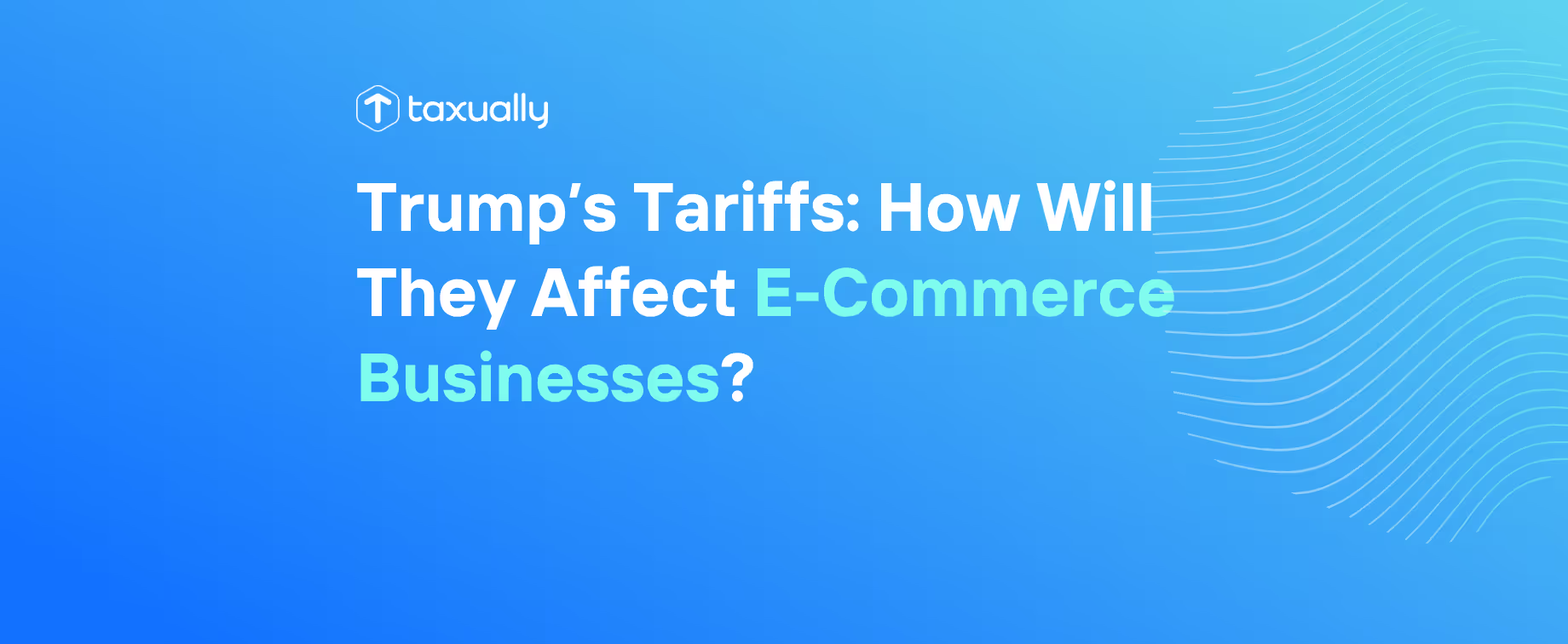Key takeaways
- Trump's tariffs are raising e-commerce costs and disrupting supply chains, demanding strategic shifts.
- Businesses are mitigating the impact by diversifying suppliers, sourcing domestically, and improving inventory management.
- Expanding into new markets offers a crucial strategy to build resilience against Trump tariffs and geopolitical trade risks.
The reintroduction of sweeping tariffs under President Trump’s second term has put e-commerce businesses under renewed pressure. Many online retailers depend on imported goods, and the 2025 tariff changes—combined with recent policy reversals—are creating both immediate cost implications and long-term uncertainty.
This post explores the key elements of the new tariff measures, their impact on e-commerce operations, and how businesses can respond strategically to stay resilient in a shifting trade environment.

Understanding the new tariff landscape
In April 2025, the U.S. administration introduced a universal 10% tariff on all imports, alongside steep country-specific surcharges. The most significant increases targeted Chinese goods, with some product categories now facing tariffs of up to 145%.
The tariffs were rolled out as part of President Trump’s “Liberation Day” initiative, aimed at reducing reliance on foreign manufacturing and reshoring supply chains. However, for many e-commerce businesses, particularly those using Chinese suppliers, these changes are having the opposite effect: tightening margins and forcing rapid sourcing shifts.
Compounding the impact, the administration also eliminated the “de minimis” exemption for small parcels from China and Hong Kong. Previously, this rule allowed low-value imports (under $800) to enter the U.S. without duties. The removal of this exemption now subjects even low-cost items to high tariffs, hitting platforms like Temu and Shein particularly hard.
Adding to the challenge is the policy uncertainty itself. After markets reacted negatively to the initial rollout, the administration temporarily suspended certain tariff measures, only to reinstate others days later. This on-again, off-again approach is making it difficult for businesses to plan inventory, pricing, and supplier strategies with confidence.
Impacts on e-commerce businesses
Increased operational costs
E-commerce companies are experiencing higher costs due to tariffs on imported goods. For instance, a 25% tariff on a $100 product adds $25 before accounting for shipping or marketing expenses. Retailers like Walmart have responded by raising prices on many of their items. A Yale study found that tariffs would cost the average U.S. household $3,800 this year.
Supply chain disruptions
The tariffs have disrupted global supply chains, leading to inventory shortages and shipping delays. Many companies had preemptively increased inventory levels, but these buffers are depleting, causing concerns about product availability.
Strategic shifts in sourcing
Businesses are reevaluating their sourcing strategies to mitigate tariff impacts. Some are exploring domestic suppliers or diversifying their supplier base to reduce reliance on countries affected by high tariffs.
Navigating the uncertainty
The unpredictability of tariff implementations and suspensions has created a volatile environment for e-commerce businesses. For example, the sudden imposition of tariffs led to a significant market downturn, prompting a temporary suspension of some tariffs to stabilize the economy.
This uncertainty complicates long-term planning, affecting decisions on inventory management, pricing strategies, and supplier relationships. Businesses must remain agile and informed to navigate these fluctuations effectively.
Strategies for e-commerce businesses
To navigate the current tariff environment, e-commerce businesses can consider the following approaches:
- Supplier diversification: Explore alternative suppliers in countries not subject to high U.S. tariffs. Southeast Asia, Latin America, and parts of Europe offer growing manufacturing hubs.
- Domestic sourcing: Assess the feasibility of sourcing products locally to reduce import exposure, especially for high-volume or high-margin items.
- Transparent pricing: Communicate price changes clearly to customers, framing them in terms of rising import costs and emphasizing value wherever possible.
- Inventory management: Improve demand forecasting and stock control to avoid over-ordering or supply shortages in response to tariff-related delays.
- Expand into new markets: Offset U.S.-based volatility by growing your presence in other regions, particularly Europe, where consumer appetite for international e-commerce remains strong. With robust digital infrastructure, expanding VAT support, and increasing cross-border demand, Europe offers stability and scale for long-term growth.
Conclusion
While Trump’s 2025 tariff policies introduce new challenges for U.S.-based e-commerce businesses, they also highlight the importance of agility, diversification, and global strategy. For many, this is a timely opportunity to rethink operations—whether that means sourcing beyond China, optimizing logistics, or exploring growth in new markets.
Expanding into Europe, for example, can provide access to a large, digitally connected customer base with fewer geopolitical trade risks. Taxually supports this move by simplifying VAT compliance across the EU, offering automated registration, filing, and ongoing compliance for sellers of all sizes. With the right tools and a clear strategy, businesses can turn today’s uncertainty into tomorrow’s advantage—building more resilient, globally diversified operations for the long term.
Talk to one of our VAT experts today and find out how we can help with your business expansion.
Frequently asked questions
New Year's Day - 1/1/2024Memorial Day - 5/27/20244th of July - 7/4/2024Labor Day - 9/2/2024Thanksgiving Day - 11/28/2024Day after Thanksgiving - 11/29/2024Christmas Eve - 12/24/2024Christmas Day - 12/25/2024
How will Trump’s 2025 tariffs affect e-commerce businesses?
The new tariffs—10% on all imports and up to 145% on Chinese goods—are driving up costs, disrupting supply chains, and reducing profit margins for online retailers that rely on imported products.
What does the removal of the de minimis exemption mean?
Low-value imports (under $800) from China and Hong Kong are no longer duty-free, meaning even inexpensive items now face tariffs—especially impacting platforms like Temu and Shein.
How can e-commerce sellers adapt to the new tariffs?
Businesses can mitigate risks by diversifying suppliers, sourcing domestically, improving inventory management, and expanding into stable markets like the EU to balance U.S. trade volatility.



















